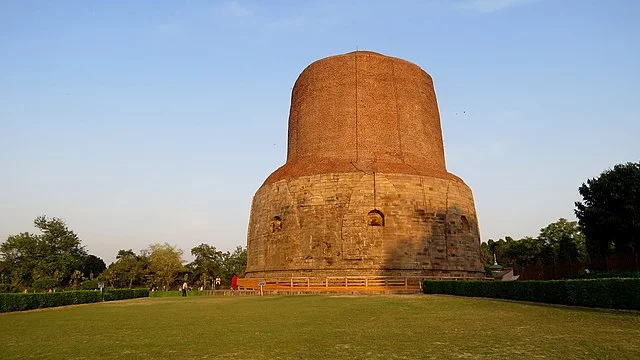The Dhamek Stupa is an important Buddhist monument located in Sarnath, India. It marks the site where Siddhartha Gautama, known as the Buddha, delivered his first sermon around 528 BC. This sermon is significant as it introduced the core principles of Buddhism.
Get your dose of History via Email
Historical Background
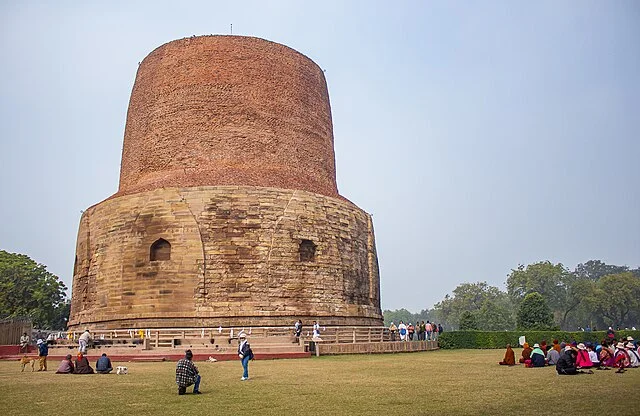
The Dhamek Stupa was constructed in the 5th century AD. It stands as a tribute to the teachings of the Buddha. The stupa is built on an earlier structure, dating back to the 3rd century BC, which Emperor Ashoka commissioned. Ashoka’s reign (c. 268–232 BC) was crucial for spreading Buddhism across India and beyond.
Architectural Features
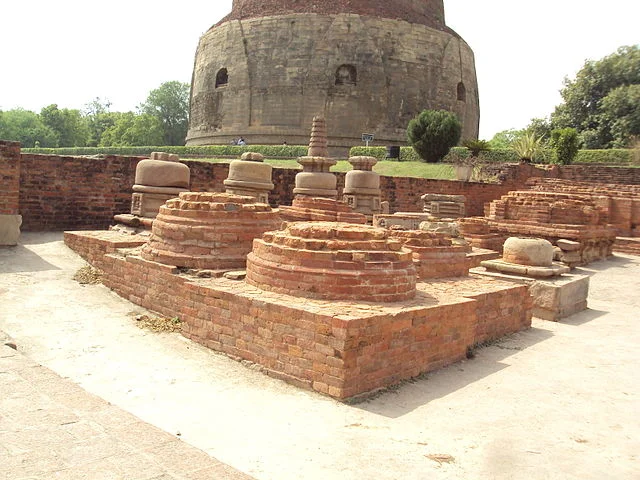
The Dhamek Stupa is impressive in size and design. It rises to a height of 43.6 meters and has a diameter of 28 meters at its base. The structure is made of stone and brick, featuring intricate carvings. These carvings depict various scenes from the life of the Buddha and other significant Buddhist symbols.
The stupa has a cylindrical base and a square dome, which is typical for stupas. The design serves both functional and symbolic purposes. It represents the enlightened mind and the path to nirvana.
Significance
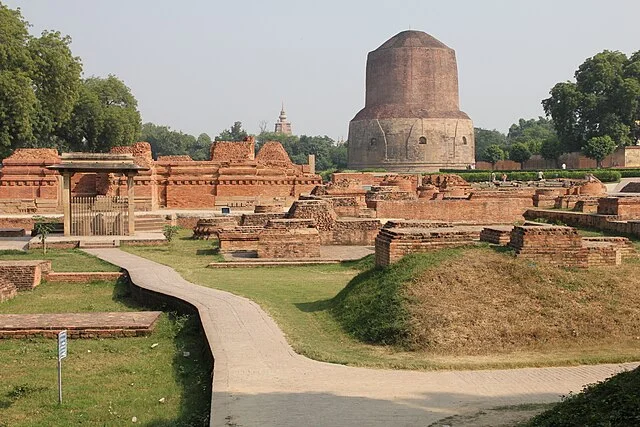
The Dhamek Stupa serves as a pilgrimage site for Buddhists worldwide. It symbolizes the spread of Buddhist teachings. Many visitors come to Sarnath to meditate and reflect on the teachings of the Buddha.
Additionally, the site is of archaeological importance. Excavations have revealed ancient artifacts and structures, contributing to our understanding of early Buddhist architecture.
Preservation Efforts
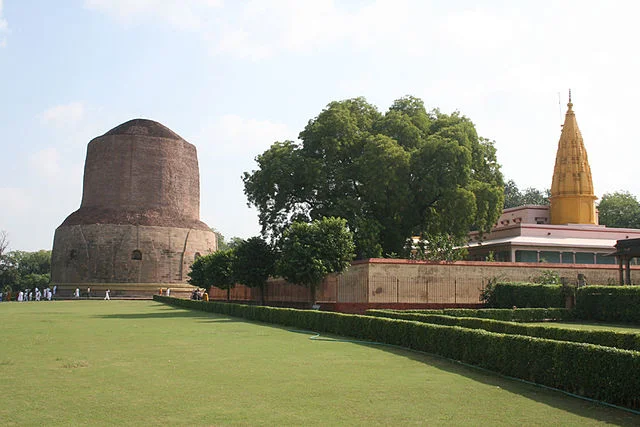
Over the years, the Dhamek Stupa has undergone various restoration efforts. These efforts aim to preserve its structure and historical significance. The Archaeological Survey of India (ASI) manages the site, ensuring that it remains a vital part of India’s cultural heritage.
Conclusion
The Dhamek Stupa is a monumental symbol of Buddhism and its teachings. It stands as a reminder of the Buddha’s first sermon and the principles he taught. As a key historical and architectural site, it continues to attract scholars, pilgrims, and tourists alike. The stupa’s preservation ensures that future generations can learn about and appreciate its significance.
Source:

